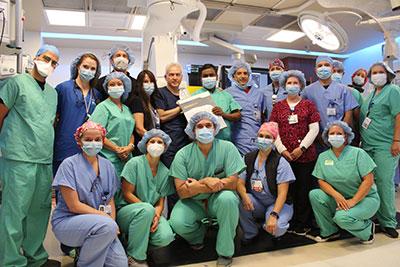
Physicians at the Texas Cardiac Arrhythmia Institute (TCAI) at St David’s Medical Center in Austin and Los Robles Health System in Thousand Oaks, became the first in the USA to implant the Watchman FLX left atrial appendage closure (LAAC) device (Boston Scientific).
The Watchman FLX device, which is indicated to reduce stroke risk in patients with non-valvular atrial fibrillation (AF), gained US Food and Drug Administration (FDA) approval last month.
Physicians at the two hospitals, which are both HCA Healthcare facilities, performed near simultaneous implantation of the device.
Andrea Natale, cardiac electrophysiologist and executive medical director of TCAI, and Saibal Kar, interventional cardiologist at Los Robles Health System, performed the first procedure in Thousand Oaks, while Rodney Horton, cardiac electrophysiologist at TCAI, performed the first case in Austin.
Additionally, Kar was the principal investigator for the preclinical PINNACLE FLX trial prior to FDA approval, which evaluated the performance of the device as an alternative to long-term, non-vitamin K antagonist oral anticoagulants (NOACs) and other oral anticoagulant medications.
“The new device is built upon the most studied and implanted LAAC device in the world as a treatment option for people with AF not caused by a heart valve problem, also known as non-valvular AF,” Kar said. “It allows us to help treat more patients safely and effectively to ensure the best outcomes.”
Up to six million Americans are estimated to be affected by AF, which gives them a greater risk of stroke than those with normal heart rhythms.
“This device serves as a safe and effective alternative to reduce the risk of stroke for patients with non-valvular AF, especially those with a compelling reason not to be on blood thinners,” Horton said.
This technology is designed to reduce the risk of stroke by permanently closing off the left atrial appendage (LAA) to keep blood clots from entering the bloodstream and potentially causing a stroke. By closing off the LAA, the risk of stroke may be reduced and, over time, patients may be able to stop taking blood thinners, such as warfarin.
“The rounded design allows us to safely enter, and manoeuvre within the LAA, resulting in optimal placement and long-term stability,” Natale said. “It is also available in broader size options than the previous generation device, which allows us to treat a wider range of patients.”












